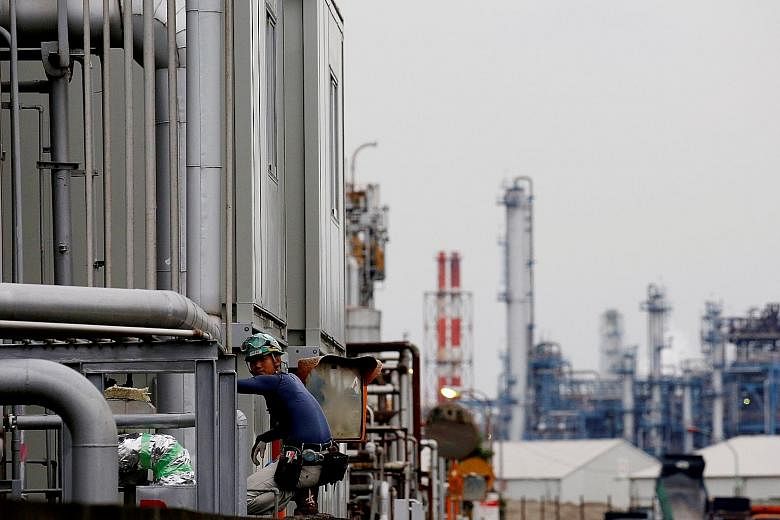TOKYO • Japan's industrial output contracted last month and partially reversed the previous month's gain, in a sign of fragility in factory activity as increasing global risks threaten to undermine the country's export-reliant economy.
The 1.1 per cent month-on-month fall, pressured by a pullback in production of general purpose machinery, was better compared with a median market forecast of a 1.9 per cent decline, following a 2.9 per cent increase in October, the data showed.
While the latest figure was better than forecast, it is not expected to be smooth sailing ahead for Japanese manufacturers.
Manufacturers surveyed by the Ministry of Economy, Trade and Industry expect output to rise 2.2 per cent this month but decline 0.8 per cent next month, the data showed.
Yesterday's data comes at a time of heightening volatility in global markets on concerns over slowing economic growth in the United States and China, uncertainty about US fiscal and monetary policies, and trade protectionism.
Economists expect factory output and economic growth to rebound in the current quarter after a run of natural disasters disrupted production and triggered a third-quarter economic contraction. However, the authorities remain wary about the potential impact of the China-US trade war, which has not yet shown up in Japan's output data.
Separate data showed that Japan's jobless rate rose to 2.5 per cent last month from 2.4 per cent in October, and jobs availability grew to 1.63 jobs per applicant from 1.62 in the previous month, nearly hitting a 44-year high.
Japan's ageing and shrinking population has led to a tight job market, causing labour shortages and pushing up wages gradually as many companies scramble to attract workers.
Despite more than five years of the Bank of Japan's (BOJ) massive monetary stimulus to conquer price declines, however, inflation is struggling to accelerate, underscoring the challenge the central bank faces.
Analysts say the BOJ is in no position to normalise monetary policy any time soon, despite concerns about side effects from a prolonged easy money policy, such as a hit to banks' profits because of dwindling margins due to ultra-low interest rates.
Some flag the possibility of further easing down the road, given the tame inflation, and risks to Japan's export-led economy and business investment from a slowdown in global economic growth. Consumer inflation remains well below the BOJ's 2 per cent goal.
The Tokyo area's core consumer price index (CPI), which includes oil products but excludes fresh food prices, rose 0.9 per cent in the year to December, slowing from 1 per cent last month and matching the 0.9 per cent forecast by economists.
The Tokyo index is available a month before nationwide core CPI and serves as a leading indicator of consumer inflation.
Japanese retail sales rose 1.4 per cent in the year to November, slowing from the biggest gain in 10 months seen in October at 3.6 per cent, versus a 2.2 per cent gain expected by economists, separate data showed.
REUTERS

